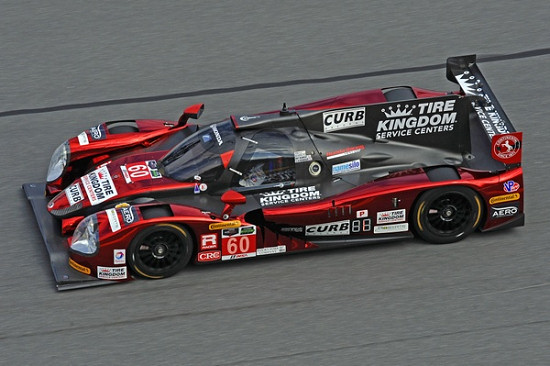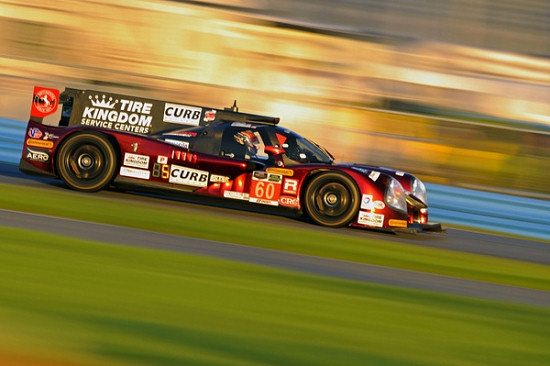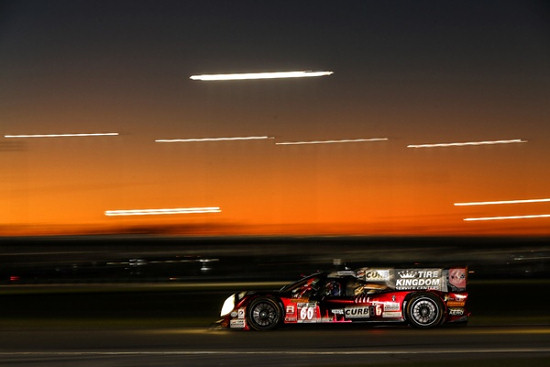The Way It Is/ Mike Shank aims at Le Mans & the global marketby Gordon Kirby |
 Over the past dozen years Michael Shank Racing has been a mainstay of American sports car racing. Shank is a former Formula Atlantic racer and team owner who started running Daytona Prototypes in the Grand-Am series in 2004. Racing Ford-powered DP cars Shank's small but ambitious Ohio-based team scored its first Grand-Am win in 2007 and went on to win the Rolex 24 Hours at Daytona in 2012 with A.J. Allmendinger/Justin Wilson/Oswaldo Negri/John Pew.
Over the past dozen years Michael Shank Racing has been a mainstay of American sports car racing. Shank is a former Formula Atlantic racer and team owner who started running Daytona Prototypes in the Grand-Am series in 2004. Racing Ford-powered DP cars Shank's small but ambitious Ohio-based team scored its first Grand-Am win in 2007 and went on to win the Rolex 24 Hours at Daytona in 2012 with A.J. Allmendinger/Justin Wilson/Oswaldo Negri/John Pew.
This year Shank has made an important new move in his team's trajectory. He's decided to move on from Daytona Prototypes and embrace the more worldly P2 concept. Shank hopes to race at Le Mans next year and in some other World Endurance Championship races over the coming years. He believes this is the only way his team can establish itself for the longterm as a commercially successful professional entity. Shank's team debuted its new Ligier JS 2-HPD/Honda at Daytona and Ozz Negri showed the car's potential by taking pole position and leading the race for a while. A.J. Allmendinger turned the race's fastest lap aboard the Ligier and despite running into suspension failure near the end of the race Shank's car was classified eleventh overall. At Daytona, Shank discussed why he decided to go the P2 route. "There are two or three key points," he said. "Number one was I had to make the right decisions to stay in business in the next five years. The Daytona Prototype concept saved my butt ten years ago. What the France family did really made my business viable, but we're ten years old now and it's time to move on. I feel the P2 concept is closer to what we're going to have in 2017 and I wanted to start now.  © Honda/HPD "And the other reason is I just think this is a better car. It's an easier car to manage, to tune, and for people to drive. So I added all that up and I thought it made a lot of sense. "The budget to run one of these cars compared to a Daytona Prototype is about the same," Shank added. "And if anyone of the guys driving a DP got a chance to drive this car they would love it because it's so much more modern and nicer to drive." Shank explained why he chose the Ligier. "It was actually a pretty simple decision," he remarked. "I didn't need to re-invent the wheel and start with a brand new product. I didn't need to go through that. Also, I really like Jacques Nicolet who owns the Ligier company. I like his passion and I like that he's a racer first and a successful businessman second. That's kind of like I feel I am. I put everything I have into this effort and I think he does too. He spends his money in a safe and sensible way and I think we've aligned with a great company. "If you look closely at the car you can see it's incredibly well-built and designed. The pole at Daytona was its eighth pole in races around the world since June of 2014 and I think that's a pretty good statement. Now, we've got to get it to finish. There are a couple of issues that we're working through but you expect that with any new car. "I think we're asking this car to do less work than we were with the DP car because we were asking way more from the Daytona Prototype than it was designed for. But this car is designed for the power and downforce and everything else." Shank is well-equipped with spare parts and components from Ligier. "I have everything. I have a lot of stuff. We've got all four corners, front and rear clips, sidepods, a windscreen. We've got a spare gearbox and whole back half of the car.  © Honda/HPD "Next year we're going to work on the repairability. This year we're working on making it reliable. But we're just scratching the surface of what this car is capable of. I really feel that way." Shank also explained his thinking in going with Honda and HPD's engine. "We run a different horsepower level in United SportsCar than in the WEC, so that was a factor," he said. "I thought the Honda engine could the manage the bigger power here a little bit better. On top of that the support Honda provide is second to none. "I was with Ford for eight years and our first idea was to put a Ford in this car. But where Ford was heading and I was heading were two different directions. So we decided we had to part ways and that was very, very difficult for me. But the way Honda has taken us on and what they've done for us already is really, really good." Shank's small team has only a dozen full-time employees. "We fly in four more people for Daytona and the long-distance races and maybe just one of those people for the sprint races. We're going testing at Sebring next before we go back for the race. We're going at this as hard as we can go at it." Shank also added his very clear ideas of the direction he believes the TUSC needs to take over the next few years. "I have a very strong opinion about this and I'm not afraid to make it," he declared. "We have to get our racing in the United States aligned with the world and I also believe we've got to get back to having just two classes.  © Honda/HPD "There's no question that this is the way to go and I'm doing everything I can to push that. I'm pushing the Frances and Scott Atherton that this is the way it has to be. "I also think they need to eliminate GTLM and make it GT3 for everybody. You can still have a factory GT3 effort. I believe we've got to have a prototype class and a GT class, just two classes and it's very clear what they are. I think this is very important in simplifying the formula and making it more appealing to the fans and media." I agree with Shank. Like IndyCar, the TUSC has a tiny media footprint and it's very difficult to sell sponsorship. To succeed in the way American sports car fans hope, the TUSC must be properly integrated into the WEC and offer sponsors an expanded global presence rather than a very limited domestic audience. For my part, I believe American sports car racing cannot achieve its potential without P1 cars. We've seen the Audis, Peugeots and Acura P1 cars race in the ALMS while the latest P1 hybrids from Audi, Toyota and Porsche have created tremendous interest at Le Mans and sparked a revival of the World Endurance Championship. Surely part of the solution to creating more interest in the TUSC is to permit P1 cars to race in the four rounds of the Patron Endurance Championship at Daytona, Sebring, Watkins Glen and Road Atlanta. Such a move would provide a tremendous boost to both the Patron Endurance Championship and the TUSC as a whole. I believe it's essential for the TUSC to encourage full-blooded, WEC-spec P2 cars on a regular basis and to invite some version of the latest P1 hybrids to race in its marquee races. If not the TUSC will face a future similar to IndyCar as no more than a provincial backwater. |
|
Auto Racing ~ Gordon Kirby
Copyright ~ All Rights Reserved |
